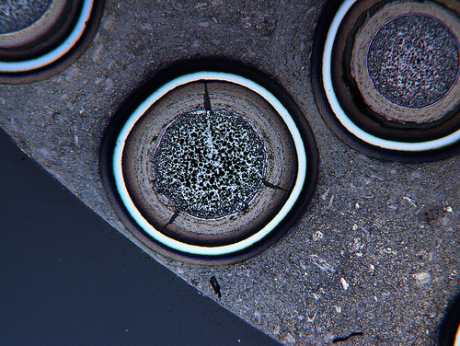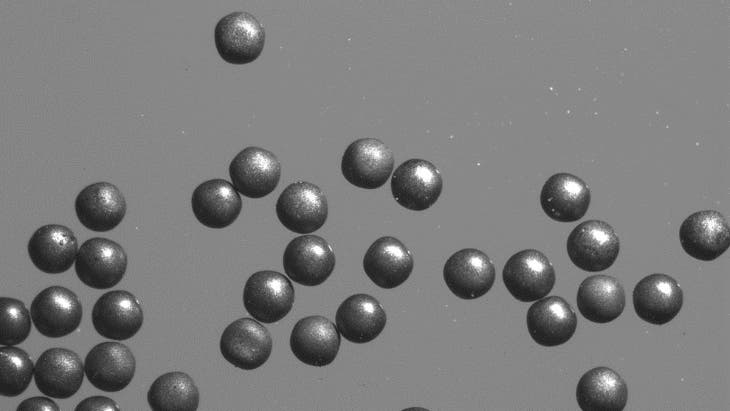TRi-structural ISOtropic particle fuel — or TRISO, for short — is a type of micro fuel particle, quite possibly the most robust type of nuclear fuel.
Since TRISO fuel is so stable, it could lead to a new generation of nuclear power plants, potentially being a game-changer in the field of renewable energy.

There’s a lot of buzz around TRISO particles, and with good reason. The particles consist of a fuel kernel surrounded by three isolating layers designed to withstand intense pressures and temperatures of up to 1600 °C, making them capable of containing the fuel even in the worst-case scenarios.
At the core of each TRISO particle, there is a fuel kernel made of uranium, carbon, and oxygen. The kernel is encapsulated by materials that prevent the release of radioactive fission products.
Nuclear power
“I believe nuclear power is the best chance we’ve got at clean energy,” Nobel Laureate Gerard Mourou recently told me in an interview. Mourou isn’t alone in nuclear energy’s camp. Even as public opinion sways against nuclear power more and more, scientists are becoming more vocal in their support for this type of energy. The main reason is pretty straightforward: it’s clean.
Across the United States, nuclear provides 20% of all electricity, and it does so without producing any greenhouse gases. Nuclear is often left out of the “clean energy” conversation, although in addition to its zero emissions, it also has a small land footprint — excellent qualities for energy production.
When it comes to nuclear power, people often take the NIMBY stance — Not In My BackYard. Everyone knows about the Chernobyl disaster in 1986, and no one wants it happening again. HBO’s excellent eponymous series brought the issue even more into the spotlight, sparking even more opposition to nuclear power. If you ask most people, they’d tell you they wouldn’t be comfortable living in the vicinity of a nuclear power plant.
But is this position justified?
Chernobyl was a so-called RBMK type reactor, the oldest commercial reactor design still in operation. There are still 10 such reactors being operated, but all of them are in Russia, and no new ones are under construction with this technology.
More modern reactors have been designed to prevent similar tragedies from happening. It’s virtually impossible for such a disaster to happen again — although, in truth, people also thought it was almost impossible when Chernobyl happened.
Improved mechanisms render modern reactors extremely safe, but are they absolutely safe?
Simply put, there is no way to foresee all possible causes of an accident. You can think about the unknowns, but can you think about the unknown unknowns? How do you prepare for the inconceivable?
In the Fukushima disaster, the only other major nuclear plant disaster since Chernobyl, a series of extreme and unforeseen events led to a catastrophe. A magnitude 9.0 earthquake (one of the largest in recorded history) generated a 15-meter high tsunami which overtopped the plant’s 5.7-meter seawalls. The tsunami flooded the plant’s basements and disabled the emergency generators. The plant had backup generators, but the building that housed them was also flooded. Power for the plant’s control systems was switched to batteries, but additional batteries couldn’t be brought in time due to poor road conditions. The Fukushima disaster wasn’t quite as bad as the Chernobyl one, but it showed that even in this modern age, we are not home free from nuclear problems.
This is where TRISO comes in.
Safe nuclear fuel
The main concern regarding any nuclear reactor is a potential meltdown. But the main advantage of TRISO is that it just can’t undergo a meltdown.
Each TRISO capsule consists of a kernel made up of uranium, carbon, and oxygen. This particle, about the size of a poppy seed, is surrounded by three small three layers of carbon- and ceramic-based materials. The resulting structure not only prevents the release of radioactive fission products but is also resistant to neutron irradiation, corrosion, oxidation and high temperatures — the most common sources of risk in a nuclear reactor.

The irradiated fuel was then exposed to more than 300 hours of testing at temperatures up to 1800° Celsius (more than 3,000° Fahrenheit). These tests exceeded the predicted worst-case accident conditions for high-temperature gas reactors and showed no to minimal damage to the particles with full fission product retention.
“The ability of the fuel to retain fission products at such high temperatures translates directly to enhanced safety of the reactor,” said in a statement Paul Demkowicz, the technical lead for post-irradiation examination of TRISO fuel. “This sort of test data is important input for reactor design and reactor licensing.”
TRISO fuel particles were originally developed during the 1960s in the United Kingdom as part of the Dragon Reactor project — an experimental high-temperature gas-cooled reactor. By 2002, the Department of Energy (DOE) was already investing significant efforts into improving TRISO fuel, and the results started showing. By 2009, improved TRISO fuel set an international record by achieving a 19% maximum burnup during a three-year test at Idaho National Laboratory (INL) — three times better than what current light-water fuels can achieve. In nuclear energy, nuclear burnup is a measure of how much energy is extracted from a primary nuclear fuel source.
This demonstrates the efficiency and long-life capability of TRISO reactors.
The Department of Energy has already expressed interest in producing and using TRISO to power reactors, and the private sector has also shown important interest.
Almost hitting the market

TRISO also isn’t some far-fetched, new technology — it’s almost ready to hit the market.
There are two experimental reactors that already use TRISO FUEL compacts: the HTR-10 in China, and the High-temperature engineering test reactor in Japan. The DOE’s Advanced Reactor Technologies (ART) program is also carrying out advanced TRISO fuel research, and some reactor vendors such as X-energy and Kairos Power have also shown concrete interest in using TRISO in their reactors — particularly in small modular and micro-reactor concepts. Various projects around the world are already developing high-temperature and molten salt nuclear reactors which use TRISO-type fuel. In 2019, three companies were selected by the DOD to work on a nuclear reactor prototype (X-energy, BWX Technologies, and Westinghouse Government Services).
This could also indicate a shift in how nuclear plants are planned: from the large-scale plants that power entire cities, we could have smaller and more robust reactors that would provide power for a smaller area without posing any risks.
It’s not just conventional nuclear reactors, either. X-energy CEO Clay Sell said TRISO was a robust fuel form well-suited to military and space applications, potentially opening new doors for space exploration.
The economic viability of nuclear energy (and TRISO particles) remains an issue, but TRISO can solve some of the long-lasting issues with nuclear energy, providing clean and reliable power. With this, perhaps, nuclear energy might finally claim an important seat at the clean energy table.






